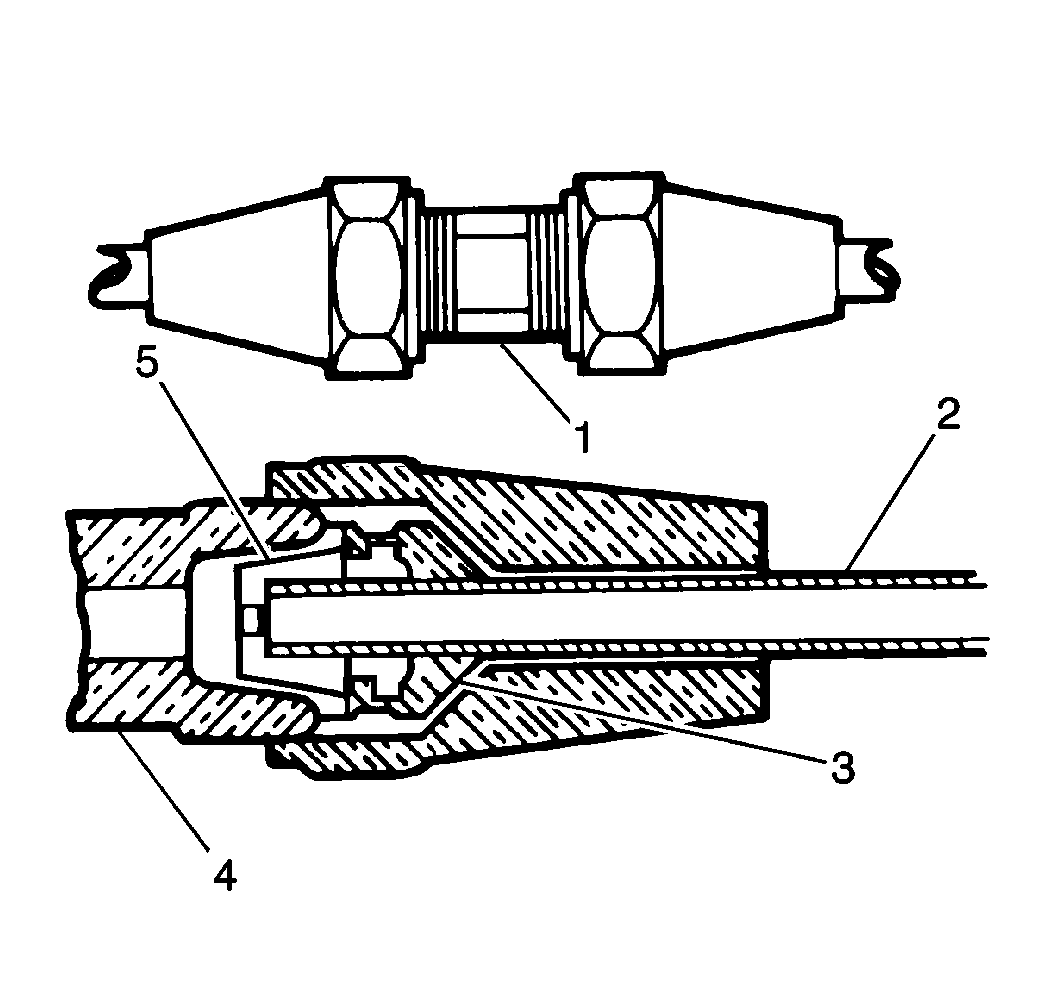- Locate the leaking area with soap and water or a stethoscope.
- Before removing the air tube, perform the following procedures.
| • | Turn the ignition ON, with the engine OFF. |
| • | With the scan tool, exhaust the air from the system for at least 60 seconds. |

- Cut and remove the leaking line (2) section.
- Remove the plastic retainer pin from one of the nuts.
- Slide the air line tube onto the nut until the line bottoms in the rubber seal (5).
Notice: Use the correct fastener in the correct location. Replacement fasteners
must be the correct part number for that application. Fasteners requiring
replacement or fasteners requiring the use of thread locking compound or sealant
are identified in the service procedure. Do not use paints, lubricants, or
corrosion inhibitors on fasteners or fastener joint surfaces unless specified.
These coatings affect fastener torque and joint clamping force and may damage
the fastener. Use the correct tightening sequence and specifications when
installing fasteners in order to avoid damage to parts and systems.
- Hold the air line tube in position.
Tighten
Tighten the air line tube repair nut to 8 N·m (70 lb in).
- Install the air line tube to the other end of the coupling.
- Repeat Steps 3 through 5.
Important: Ensure that the repaired air line tube is secured in a location where the line is not pinched, or kinked, and will not contact the exhaust system.
- Install the air line tube to the vehicle.
- Ensure that the vehicle is on level ground and perform the following steps.
| • | Turn the ignition ON, with the engine OFF. |
| • | With the scan tool, operate the air compressor for 30 seconds or until the rear of the vehicle begins to rise. |
| • | Cycle the ignition OFF, then back On, with the engine ON to allow the air suspension system to regain the desired rear suspension position. |

